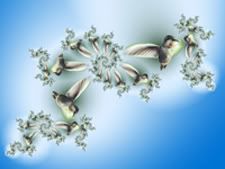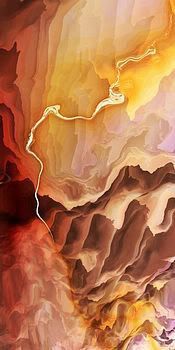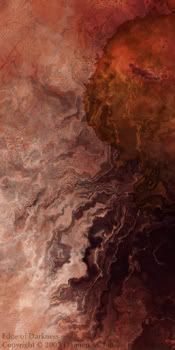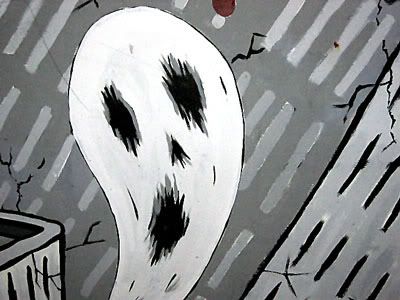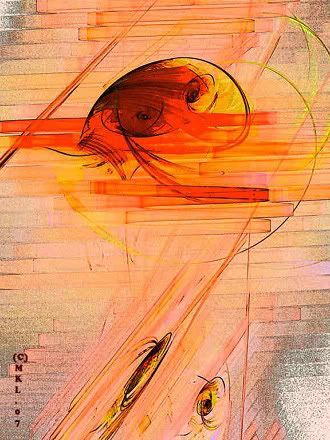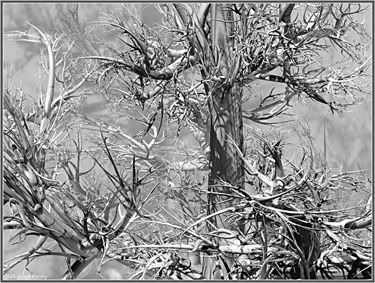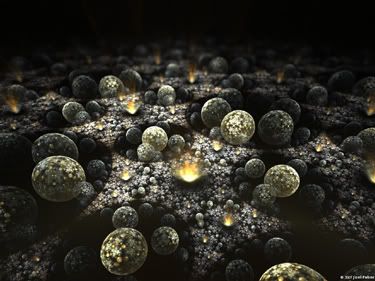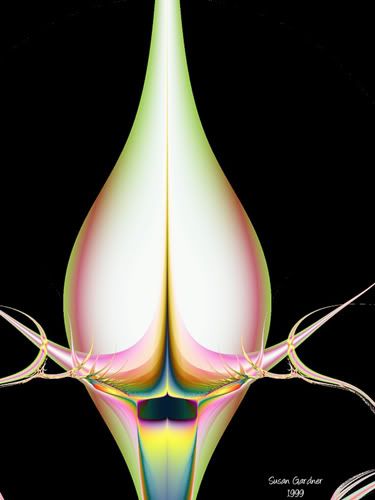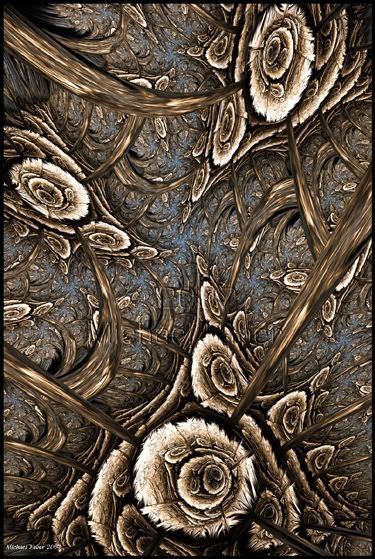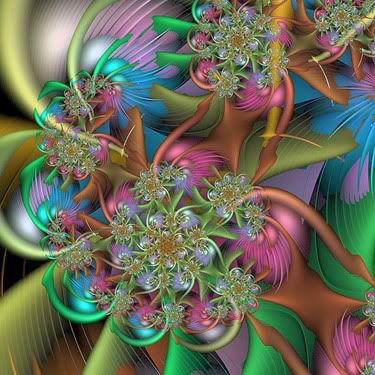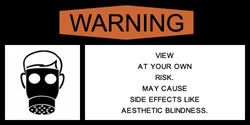Image of the Weak: Fractal Art
I used to go hunting for exciting new images. Now I'm content if I can just find something that looks different. I don't care if it's great or not.
The Golden Age of Heroes is Over
Guido Cavalcante summed it up quite well two years ago while writing on a related topic, that being the pursuit of more than just "beauty" in Fractal Art:
It's not a problem, of course, if some prefer to continue on creating purely aesthetic and visually intriguing objects. There is nothing wrong in doing that, although doing so does not constitute the same "heroic" accomplishment that it once did when algorithmic artists were struggling to break away, and give birth to a new medium. That was the challenge of the last 20 years.
Yes, all those sleek, true-color, multi-layered, "what formula is that?" fractal images we see today were once an heroic accomplishment -- just like climbing Mount Everest used to be. But nowadays, on Mount Everest, things have changed. There are package tours running tourists up the sides of Mount Everest and the real skill and endurance comes from scaling government regulations and waiting in line. It's not the same place anymore. Perhaps one day mankind's abilities will reach such heights that we will no longer climb Mount Everest but rather descend upon it from above; from a high tech helicopter or even from space. Metaphorically speaking, that's where I think Fractal Art is: the achievements of the past are beneath it.
Those achievements were technical achievements. In the Golden Age of Fractal Art's past, each new rendering capacity or feature gave a quantum leap to what a fractal program could achieve and what the person using it could achieve. It was a time where the artform was characterized by what you could do; a time of technical innovation not artistic innovation. It was like discovering or arriving at the edge of new territory.
But it's no longer heroic to plant the old flag in the same place and claim the same land for Fractal Art again and again. It's time to move on and explore the interior.
We Don't Need New Tools
We need new eyes.
If you still like looking at the carefully shaded, superimposed, "perfect" images, like those featured in that great king of cliches, the Fractal Universe Calendar, then the problem is in your mind and not with your software.
If you're not bored with boring things -- then you're boring!
Animation alone seems to offer something new. There have been some interesting achievements ("2266" is my favorite), but by far little more than "zoomathons". Of course, motion pictures didn't make still photography obsolete. But rather, "animated photography" expanded the territory (and costs) of the photographic artform. So if you're thinking of upgrading to Ultra Fractal 5, then I recommend you get the animation version. It's a new frontier for Fractal Art, and I think you'll find you'll need just as much creativity with sound and music as with fractals since silent fractal movies will probably have the same one-dimensional feel as the original silent movies did with their audiences.
Layering is the Opiate of the Masses
I think graphical enhancement or "post-processing" is great; it merges seamlessly with the processing that fractal generators do. Fractal "generators" render fractals, but what this actually amounts to is nothing more than photoshopping invisible mathematical calculations. All fractal imagery is artificial and whether its appearance is limited to just those graphical tricks that the fractal program knows how to do, or whether you add a few tricks from the repertoire of a graphics program (where most of those "rendering" tricks come from, anyway) merely reflects one's political and social allegiances in the online fractal world, a matter which is purely trivial or abitrary with respect to the pursuit of making artwork. (Or, as The Fractal Artists Ring says, "Dogmatic")
But combining fractal images in layers like some gourmet sandwich is a technique that I have rarely seen yield successful results and most often leads to the blurred, wispy, non-descript "stuff" that populates most of the online galleries of Ultra Fractal enthusiasts. Layering as a creative strategy in Fractal Art might seem normal and "professional" but I think that's only because so many people are using it. I don't think layering as a feature in fractal programs has produced the quantum leap in creativity that it was expected to. Two wrongs don't make a right, and two dull layers rarely turn into a single good one. Texture or background layers are a different matter. They perform the same enhancing function as a graphics filter.
In short, very few fractal artists utilize the creative effects of a graphics program to enhance their work and as such the vast majority of fractal artwork displayed is plain and repetitive. Layering, I suspect, for those who work with Ultra Fractal, is just the result of trying to revive such lifeless imagery in a context where there's nothing else they can do.
Art, not Artists
Stop praising new artwork whose only significant attribute is the name of the artist who made it. For that matter, hold the Big Names and the old Has-Beens to higher standards of innovation and ridicule them when they just repeat the same old visual tricks. And how should you ridicule them? Direct them to your own latest work that looks just like theirs. Imitating someone else's work is the sincerest form of flattery in Fractal Art -- flattering yourself, that is.
And then... start praising artwork that's innovative despite who made it. Forget politics and give kudos to the artwork that deserves it. Of course, if you love online politics more than art or are more interested in the personalities of fractal artists than the artwork itself, then you will have no interest in this -- because you have no interest in fractal art.
Well, there you have it. Sorry I couldn't find someone to fill the Image of the Week chair. Masterpiece of the Second, however. That would be easy.
Technorati Tags: fractal art, fractal, what's wrong with our society?, art criticism, art hammer, the wrath of art,

